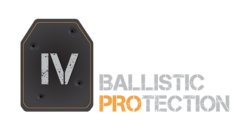Bulletproof vests have different levels of protection that determine their usefulness in different situations. These levels establish what type of ammunition they can support, knowing them is crucial to choose the right body armor. In this article, you will discover what levels there are and how they differ, in addition, you will know a key fact to be able to choose your vest.
Bulletproof vest protection levels
The various levels of body armor protection are defined by the United States National Institute of Justice. These levels represent the ability of the vest to withstand projectiles of different calibers and velocities. There are 5 levels in total, the lowest is IIA while the highest is level IV.
Level IIA
It is the lowest level. It is usually a soft or elastic armor, about 4 millimeters thick. This armor can withstand 9mm FMJ RN bullets at about 373m/s.
Tier II
The second weakest level, it can be soft or rigid armor, and is usually about 5 millimeters thick. It can take 9mm bullets like the previous ones, but at a higher speed (400 m/s) and .357 JSP bullets at about 436 m/s.
Level IIIA
The vests of this intermediate level have a thickness of 8 to 10 millimeters. The ammunition they can support is .44 SJHP at a speed of about 436 m/s.
Tier III
The thing gets would be from these levels. With a thickness of around 15mm and a weight of around 2kg, this vest can withstand 5.56mm/7.62mm NATO rifle ammunition at around 847m/s.
Tier IV
It is the highest level of protection, with a thickness of about 20 millimeters and a weight of about 3 kilos or more. It can withstand .30 armor penetrating ammunition (M2 AP), at a speed of about 878 m/s.
What should you take into account to choose your vest?
Bulletproof vest tests consist of 6 shots in the same caliber armor that corresponds to your level. For example, a level IV must withstand 6 shots of .30 ammunition (M2 AP) with different angles.
So how do you choose the right vest? Taking into account the differences between sectors (a bodyguard does not need the same as a professional soldier), the following is always recommended: Choose the level of protection that the ammunition you carry yourself can withstand.
The logic behind this is simple. We don't know what weapon the bad guys will carry, but we do know that in a critical situation, they can use our weapons against us.
In Ballistic Protection IV We can advise you on the appropriate level of body protection you need. Contact us!


Pingback: How to choose the right bulletproof vest?